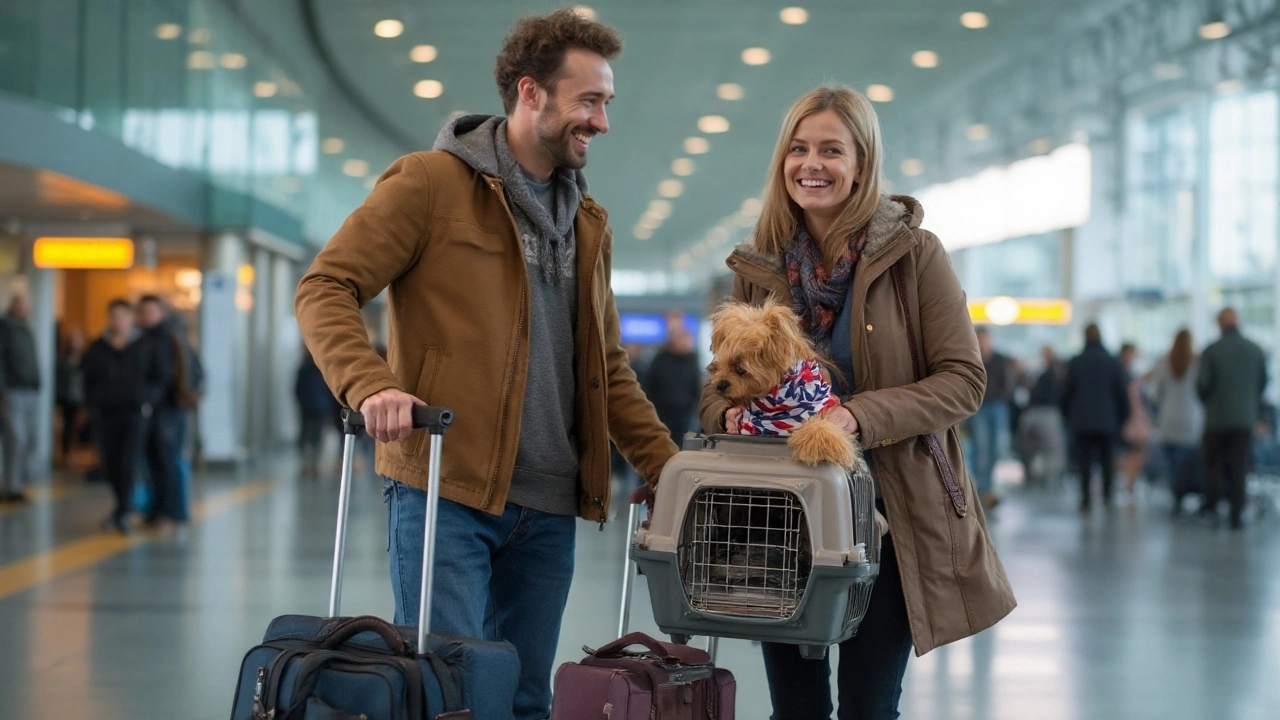Airline Pet Travel: Fly With Your Dog Without Stress
Planning a trip that includes your dog can feel like a juggling act. Between vet visits, paperwork, and the fear of a cramped cargo hold, many owners freeze up. The good news? With the right prep you can make the journey smooth for both you and your pup.
Pre‑Flight Prep: Docs, Health Checks, and Packing
First step: get the paperwork in order. Most airlines require a recent health certificate (usually within 10 days of travel) and proof of vaccinations. Call the airline early to confirm exact dates and any breed‑specific restrictions.
Schedule a quick vet visit. Ask the vet to check your dog’s ears, eyes, and paws – any hidden issue can become a big problem on a plane. If your dog gets motion‑sick, discuss short‑acting anti‑nausea meds; many vets can prescribe a dose that’s safe for travel.
Pack a travel kit that fits in the carrier: a small water bottle (or a collapsible bowl), a few bite‑size treats, a leash, and a blanket that smells like home. Having a favorite chew toy can keep your dog occupied while you’re waiting at the gate.
Cabin or Cargo: Choosing the Best Option and Keeping Calm
If your dog is under the airline’s weight limit (usually 15‑20 lb), the cabin is the safest bet. A soft‑sided carrier that fits under the seat keeps your pet close and reduces stress. Place a familiar blanket inside, and keep the carrier upright so your dog can see you.
When the cargo hold is the only option, choose a sturdy, airline‑approved crate. Line the bottom with a absorbent pad and a towel for comfort. Arrive at the airport early so the crew can handle the crate gently and give it a final check.
Regardless of location, timing meals matters. Feed your dog no later than four hours before the flight to avoid an upset stomach. Offer a small sip of water right before boarding, then let the crew handle water during the trip – most airlines provide water bowls for cargo crates.
Calming aids can make a huge difference. A short‑acting pheromone spray (like Adaptil) inside the carrier, or a vet‑approved mild sedative, can keep anxiety at bay. Avoid over‑the‑counter “calm” pills unless your vet says it’s safe.
During the flight, check on your dog if you’re in the cabin. A quick hand tap on the carrier reassures them that you’re there. If you’re in cargo, ask the flight attendant for a quick visual check before take‑off and after landing.
When you land, give your dog a few minutes to stretch before pulling the carrier out. Offer water and a small snack, then head for a quiet spot to let them adjust. A short walk, if allowed, helps release any built‑up tension.
Flying with your dog doesn’t have to be a nightmare. Follow the checklist, keep the paperwork tidy, and choose the travel method that fits your dog’s size and temperament. With a little forethought, you’ll both arrive ready for the adventure that awaits on the ground.
TSA Approved Pet Carriers: Everything You Need to Know Before Flying With Pets
Get the real scoop on TSA approved pet carriers. Learn about airline rules, carrier features, real examples, and super practical tips for stress-free flying with pets.
